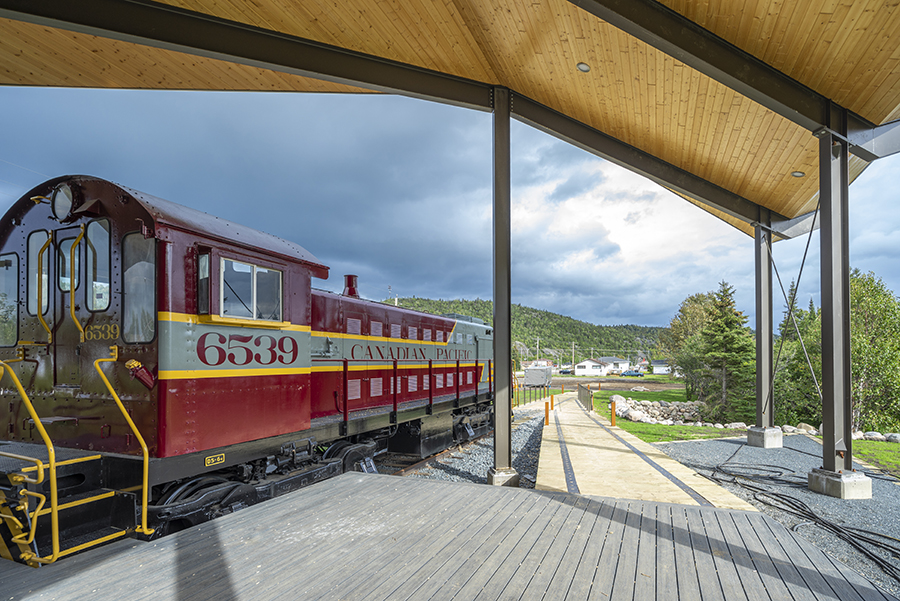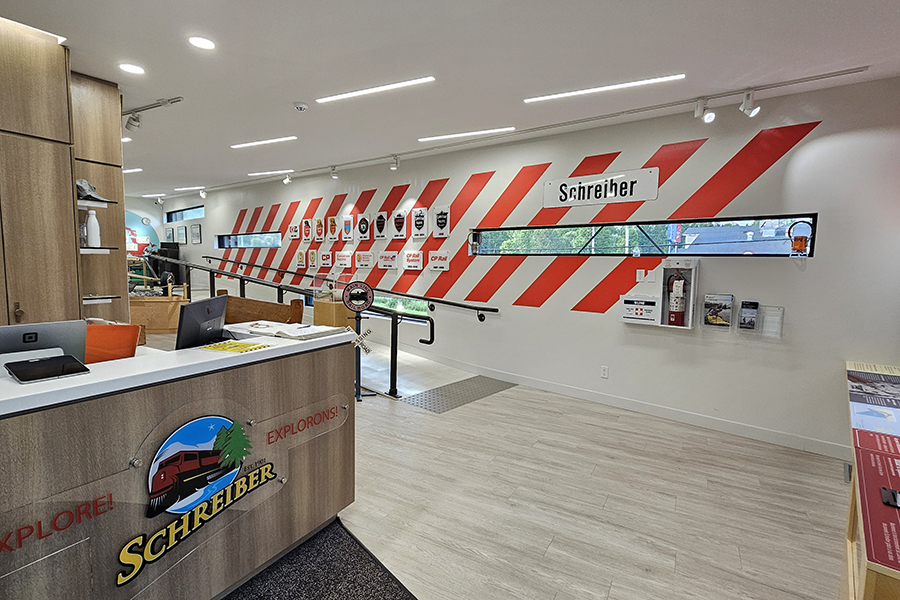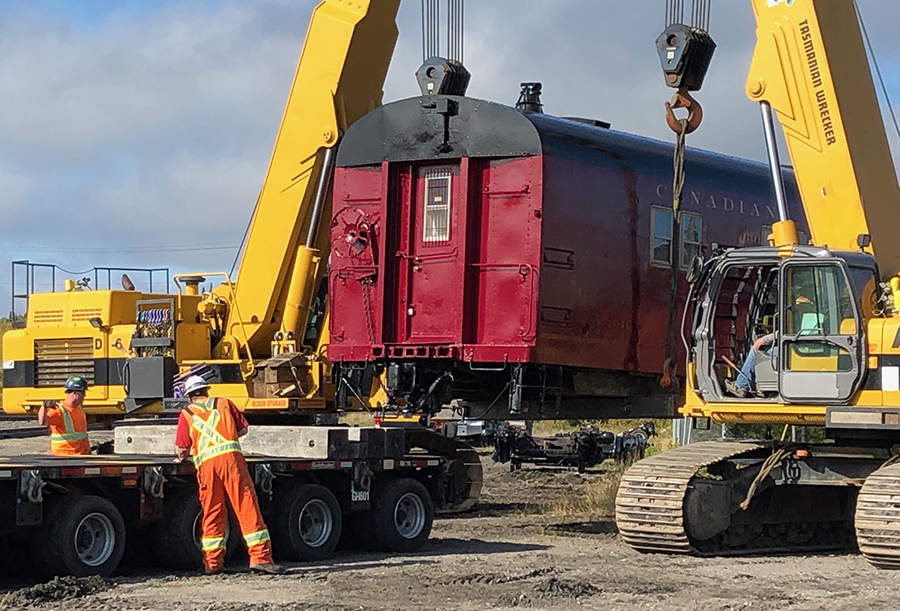Location: Schreiber, Ontario
Completed: 2020
Architect: Number Ten Architectural Group - Ontario, Architects
Nominated by: Lise Vaugeois, MPP (Thunder Bay–Superior North)
In the town of Schreiber—
named after the chief engineer of the Canadian Pacific Railway (CPR)—trains no longer stop. But thanks to a bold little building just off the Trans-Canada Highway, people still come to see the town’s rail heritage, reimagining the former railway stop for a new age.
From Junction to Landmark
The project began with two railcars, a locomotive, and a question: how do you get people to pull over? Trains and highways have always traced each other across the country, and in Northwestern Ontario, the overlap is especially clear. Number Ten Architectural Group used this relationship as inspiration, aligning the Discovery Centre and railcars parallel to the highway like a train rolling through town.
At one end is a historic diesel engine, leading the entire site eastward; at the other, a converted railcar turned museum space; and in between, a new visitor centre building, clad in lap siding and weathering steel, elevated slightly above the ground to suggest it’s also on rails. Connected at an angle to the visitor centre, as if entering a rail junction, is a former boxcar turned immersive VR experience.
An angled, sculptural canopy ties the whole site together. Dark on the outside and warmly finished underneath, it’s part roof, part wall, and part signal—a folded origami structure that beckons to drivers from the highway. The canopy reaches the ground at key points, enveloping railcars and architecture alike in a way that recalls both the shelter of a traditional station and the speedy movement of trains at full clip. It’s an intervention that is small in scale but striking in presence.
Designed for the Present, Rooted in the Past
The Discovery Centre was designed to be more than a static museum. Outdoor platforms connect the historic railcars to the main building, allowing visitors to climb up, pass between cars, and wander. Interpretive exhibits line the interior, while outside, a timber boardwalk slopes gently upward, its surface detailed with weathered steel straps that convincingly evoke railway tracks. This isn’t just visual storytelling—it’s also universal design. The gradual grade and tactile strapping guide all visitors, both visually and physically, toward the deck without the need for add-on ramps.
 Interior view of the visitor centre. Image by Number TEN Architectural Group.
Interior view of the visitor centre. Image by Number TEN Architectural Group.
Programmatically, the architecture is modest: just a reception area, a few offices, an open space, and washrooms. But it is an elegant answer to a complex brief. The township wanted something that told their story without feeling nostalgic or quaint. Instead, there was a desire to build something contemporary, built for today’s travellers but rooted in Schreiber’s identity nonetheless. The result is a piece of civic architecture that surprises and delights—an unexpected modern pavilion that invites you to get off the highway and check it out.
A Collective Effort
From the beginning, the project was shaped by local knowledge. Residents even turned out to witness the dramatic relocation of railcars from their original location adjacent a railyard to their new home at the highway’s edge. Architect Aaron Pollock, who led the project early in his career, described the process as a “real town effort”—a collaboration made up of site visits, lunchtime conversations, and shared enthusiasm for telling Schreiber’s story in a new way.
 Looking out towards the highway, with the centre's railway-inspired timber and steel ramp in view. Image by Number TEN Architectural Group.
Looking out towards the highway, with the centre's railway-inspired timber and steel ramp in view. Image by Number TEN Architectural Group.
 Workers moving railcars from the yard to their new location. Image by Number TEN Architectural Group.
Workers moving railcars from the yard to their new location. Image by Number TEN Architectural Group.
Though small in size, the Discovery Centre reflects a big shift in how communities can think about their future. It doesn’t try to recreate the grandeur of the past. Instead, it builds a new kind of junction—one that links people not by rail, but by memory, movement, and curiosity.|
This post is part of the OAA’s Queen’s Park Picks 2025 series, where Ontario’s Members of Provincial Parliament (MPPs) were encouraged to nominate a building in their riding for a chance to learn more about it. This year, MPPs were asked to consider various typologies related to “reshaping communities” when making their suggestion, tying into the 2025 OAA Conference theme. Check out the rest of the series to learn more about great buildings across the province.